As an avid hiker, I know that there are few things more enjoyable than getting out into nature and exploring the great outdoors. However, hiking can also come with its fair share of challenges, including the risk of developing hemorrhoids. But can hiking really cause hemorrhoids, and what can hikers do to prevent this painful condition from occurring?
Hemorrhoids are a common condition that affects millions of people each year. They occur when the veins in the rectum or anus become swollen and inflamed, often as a result of increased pressure in the area. While hemorrhoids can occur for a variety of reasons, certain activities are more likely to cause them to flare up, including hiking and other strenuous physical activities. So if you’re an avid hiker, it’s important to be aware of the risks and take steps to prevent hemorrhoids from occurring.
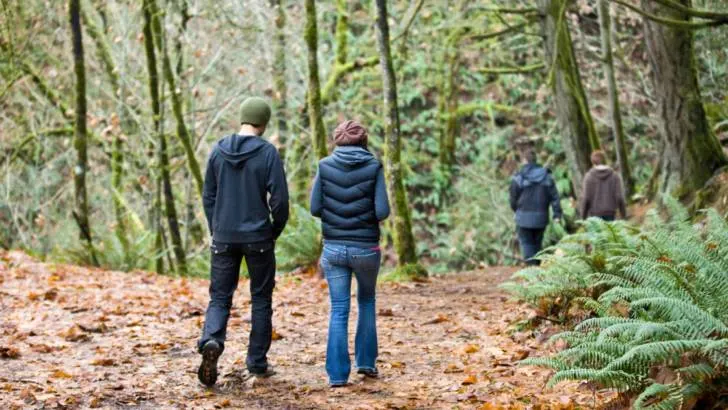
If you’re a hiker who is concerned about the risk of hemorrhoids, there are several things you can do to reduce your risk. First and foremost, it’s important to stay hydrated and eat a healthy diet that is high in fiber. You should also avoid straining to pass a bowel movement and take breaks often to stretch your legs and back. And if you do experience hemorrhoids, it’s important to see a doctor for treatment as soon as possible to prevent the condition from getting worse.
Can Hiking Cause Hemorrhoids?
As someone who loves hiking, I understand the importance of staying active and healthy. However, it’s essential to be aware of the potential risks associated with any physical activity, including hiking. One of the most common concerns is whether hiking can cause hemorrhoids.
Hemorrhoids are swollen veins in the lower rectum and anus, which can cause discomfort, itching, and bleeding. While hiking itself does not cause hemorrhoids, it can aggravate existing hemorrhoids or increase the risk of developing them.
The main reason for this is the pressure that is put on the pelvic area during long hikes and strenuous activity. When the pelvic muscles are contracted due to exercise, they can put increased pressure on veins in the lower rectum and anus, which causes them to swell. Additionally, dehydration and poor hygiene while hiking can also contribute to the development of hemorrhoids.
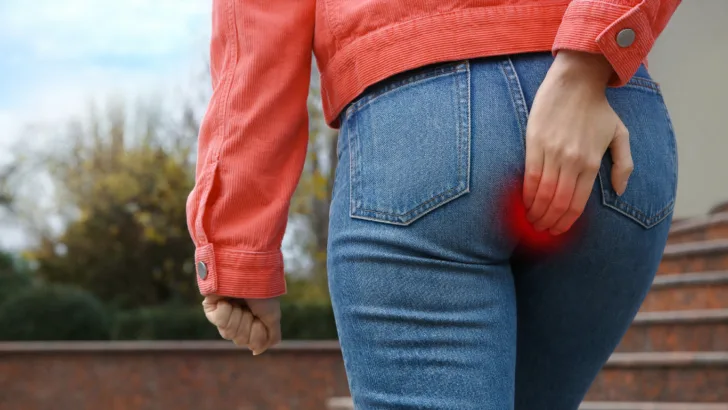
However, it’s important to note that not all hikers will experience hemorrhoids. Proper hydration, good hygiene, and taking breaks during long hikes can help reduce the risk of developing hemorrhoids. Additionally, wearing comfortable and breathable clothing and avoiding heavy lifting can also help prevent hemorrhoids from forming or worsening.
In summary, hiking can cause hemorrhoids, but it’s not a guarantee. By taking the necessary precautions, such as staying hydrated, taking breaks, and maintaining good hygiene, hikers can reduce their risk of developing hemorrhoids while enjoying the great outdoors.
Related Posts:
What Are Hemorrhoids?
Hemorrhoids Are Swollen Veins In The Anal Canal
Hemorrhoids, also known as piles, are swollen veins in the anus and lower rectum. They can be compared to varicose veins, but are located in a different part of the body. Hemorrhoids can occur both internally and externally. Internal hemorrhoids are located inside the rectum, while external hemorrhoids develop under the skin around the anus.
They Can Be Caused By A Number Of Factors
There are several factors that can contribute to the development of hemorrhoids, including straining during bowel movements, sitting for long periods of time, chronic constipation or diarrhea, obesity, and pregnancy. Additionally, certain activities such as heavy lifting or intense physical exercise like hiking can exacerbate existing hemorrhoids or lead to their development.

Hemorrhoids Can Be Either Internal Or External
Internal hemorrhoids are typically painless and can go unnoticed until they start to bleed. In contrast, external hemorrhoids can be quite painful and may cause itching, swelling, and discomfort. If a blood clot forms in an external hemorrhoid, it can cause a painful lump known as a thrombosed hemorrhoid.
Related Posts:
The Specific Activities That Are Most Likely To Cause Hemorrhoids
As someone who enjoys hiking, I know that it is a great way to stay active and explore the outdoors. However, it is important to be aware that certain activities while hiking can increase the risk of developing hemorrhoids.
The most common activities that can lead to hemorrhoids during a hike include prolonged sitting or squatting, heavy lifting, and straining during bowel movements. These activities can put pressure on the veins in the rectal area and cause them to become swollen and inflamed.
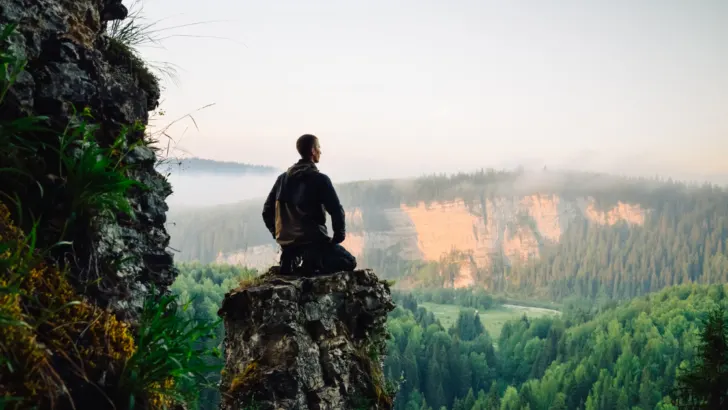
Prolonged sitting or squatting can cause blood to pool in the veins around the anus, leading to engorged hemorrhoids and painful pressure in the anal region. Heavy lifting, such as carrying a heavy backpack or climbing steep hills, can also increase pressure in the rectal area and cause hemorrhoids to flare up. Finally, straining during bowel movements, which can be caused by dehydration or a lack of fiber in the diet, can also contribute to the development of hemorrhoids.
To reduce the risk of developing hemorrhoids while hiking, it is important to take frequent breaks and avoid prolonged sitting or squatting. It is also important to avoid heavy lifting and to maintain good posture while carrying a backpack. Additionally, staying hydrated and eating a diet high in fiber can help prevent constipation and straining during bowel movements.
Related Posts:
Tips For Preventing Hemorrhoids While Hiking
When it comes to hiking, it’s important to take care of your body to prevent any discomfort or injuries. Hemorrhoids are a common issue that can occur during hiking, but there are some simple steps you can take to prevent them.
Firstly, it’s essential to stay hydrated during your hike. Dehydration can lead to constipation, which can cause hemorrhoids. Bring plenty of water with you and drink regularly throughout your hike.

Secondly, make sure to wear comfortable clothing that is not too tight around your waist and thighs. Tight clothing can restrict blood flow to the anal area, leading to hemorrhoids. Choose breathable and loose-fitting clothing that allows for easy movement.
Thirdly, take regular breaks throughout your hike to rest and stretch your legs. Prolonged sitting or standing can put pressure on the anal area, leading to hemorrhoids. Walking around and stretching can help improve blood flow and reduce the risk of hemorrhoids.
Fourthly, consider using a cushion or seat pad to sit on during breaks. Sitting on hard surfaces can put pressure on the anal area, leading to hemorrhoids. A cushion or seat pad can help distribute your weight evenly and reduce the risk of hemorrhoids.
Lastly, practice good hygiene while hiking. Always wipe thoroughly after using the bathroom and avoid using scented or harsh toilet paper. Consider bringing wet wipes or a bidet bottle to clean yourself more effectively.

Overall, taking these simple steps can help prevent hemorrhoids while hiking and ensure a more comfortable and enjoyable experience.
Any Treatment Options For Hemorrhoids That Flare Up While Hiking
If you experience hemorrhoid flare-ups while hiking, there are several treatment options available to help alleviate the symptoms. The following are some self-help tips that you can try:
- Use moist wipes or gentle toilet paper to clean the anal area after bowel movements.
- Apply an over-the-counter hemorrhoid cream or suppository containing hydrocortisone, or use pads containing witch hazel or a numbing agent.
- Soak regularly in a warm bath or sitz bath. Soaking your anal area in plain warm water for 10 to 15 minutes two to three times a day can help reduce discomfort and swelling.
- Take oral pain relievers, such as ibuprofen or acetaminophen, to help relieve pain and discomfort.
In addition to these self-help tips, you should also consider taking some preventive measures to avoid future flare-ups. These include:
- Staying hydrated by drinking plenty of water.
- Eating a high-fiber diet to prevent constipation.
- Taking regular breaks during your hike to rest and stretch your legs.
- Wearing loose-fitting clothing to avoid irritation and chafing.
If your hemorrhoids do not improve with self-help measures, you should consult a healthcare provider for further evaluation and treatment.
Related Posts:
Stay Hydrated
As someone who enjoys hiking, I know how important it is to stay hydrated during a hike. And when it comes to preventing hemorrhoids, staying hydrated is crucial.
Dehydration can lead to constipation, which can cause straining during bowel movements and increase the risk of hemorrhoids. So, make sure to drink plenty of water before, during, and after your hike.
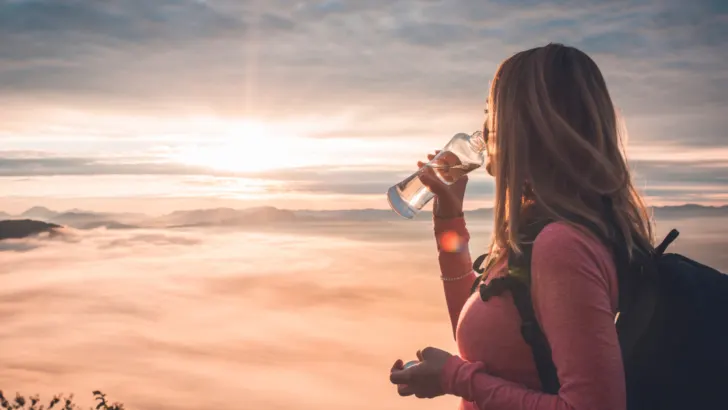
In addition to water, you can also bring electrolyte drinks or sports drinks to replenish your body’s fluids and minerals lost through sweating. Just be cautious of drinks high in sugar, which can worsen constipation.
If you’re hiking in a remote area without access to clean water, consider bringing a water filtration system or purification tablets to ensure you have a safe and reliable source of hydration.
Overall, staying hydrated is a simple yet effective way to prevent hemorrhoids while hiking. So, make sure to pack enough water and fluids for your next outdoor adventure.
Eat A Healthy Diet That Is High In Fiber
As someone who enjoys hiking, I know how important it is to maintain a healthy diet. Eating a diet that is high in fiber can help prevent hemorrhoids and alleviate their symptoms. Here are some tips to help you incorporate more fiber into your diet:
- Add more fruits and vegetables to your meals. These foods are high in fiber and can help prevent constipation, which is a common cause of hemorrhoids.
- Choose whole grains over refined grains. Whole grains are a good source of fiber and can help keep your digestive system healthy.
- Snack on nuts and seeds. These foods are high in fiber and can help keep you feeling full between meals.
- Consider taking a fiber supplement. If you’re having trouble getting enough fiber from your diet, a supplement can help.
It’s important to note that increasing your fiber intake too quickly can cause bloating and gas. To avoid these side effects, gradually increase your fiber intake over several weeks.

In addition to eating a high-fiber diet, it’s important to stay hydrated. Drinking plenty of water can help soften your stools and make them easier to pass, which can help prevent hemorrhoids.
Overall, eating a healthy diet that is high in fiber is an important step in preventing hemorrhoids and maintaining good digestive health. As someone who enjoys hiking, I know how important it is to take care of my body, and eating a healthy diet is a key part of that.
Avoid Straining To Pass A Bowel Movement
When it comes to hiking, it’s important to avoid straining to pass a bowel movement. Straining can cause a number of health problems, including hemorrhoids. Hemorrhoids are swollen veins in the lower rectum and anus that can cause pain, itching, and bleeding.
To avoid straining when passing a bowel movement, it’s important to maintain a healthy diet and stay hydrated. Eating a diet high in fiber can help keep your stools soft and easy to pass. Drinking plenty of water can also help keep your stools soft and prevent constipation.
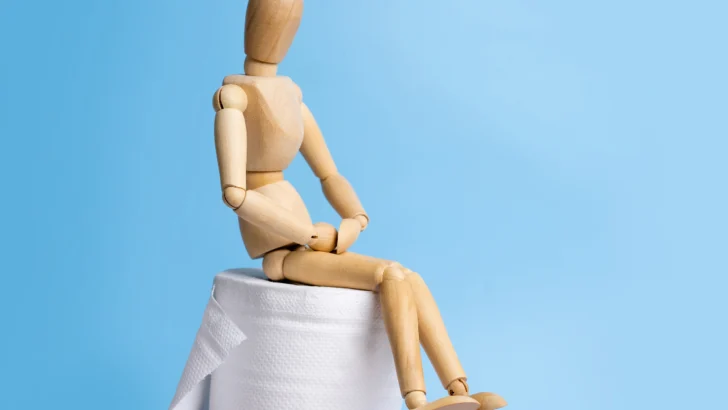
If you’re experiencing constipation, there are a number of things you can do to help relieve it. One of the most effective ways to relieve constipation is to increase your fiber intake. You can do this by eating more fruits, vegetables, and whole grains.
In addition to increasing your fiber intake, you may also want to try taking a stool softener or laxative. These medications can help make your stools softer and easier to pass.
Overall, it’s important to take steps to avoid straining when passing a bowel movement. By maintaining a healthy diet, staying hydrated, and taking steps to relieve constipation, you can help prevent hemorrhoids and other health problems.
Take Breaks Often To Stretch Your Legs And Back
When hiking, it’s important to take breaks to give your body a chance to recover. One reason to take breaks is to stretch your legs and back. Hiking can be an intense full-body workout, and stopping to stretch can help prevent muscle soreness and fatigue.
I make sure to take breaks every 30 minutes to an hour, depending on the terrain and difficulty of the hike. During these breaks, I stretch my legs by doing lunges, calf raises, and hamstring stretches. I also stretch my back by doing spinal twists and forward folds.

In addition to stretching, taking breaks often allows me to rehydrate and refuel. It’s important to drink plenty of water while hiking to avoid dehydration and to eat snacks or meals to keep up energy levels.
Overall, taking breaks to stretch your legs and back is essential when hiking to prevent muscle soreness and fatigue. It also allows you to rehydrate and refuel, keeping you energized for the rest of your hike.
If You Do Experience Hemorrhoids, See A Doctor For Treatment
If you do experience hemorrhoids, it is important to see a doctor for treatment. While hemorrhoids are typically not a serious medical condition, they can cause discomfort and pain, and in some cases, they can lead to complications.
When you see a doctor for hemorrhoid treatment, they will typically begin by examining the affected area. They may perform a digital rectal exam, which involves inserting a gloved, lubricated finger into the rectum to check for any abnormalities. They may also perform a visual inspection of the affected area.
Based on their examination, your doctor may recommend one or more treatments for your hemorrhoids. These may include:
- Over-the-counter creams or ointments: These products can help relieve itching and pain associated with hemorrhoids.
- Sitz baths: Soaking in warm water for 10 to 15 minutes several times a day can help reduce swelling and relieve discomfort.
- Rubber band ligation: This procedure involves placing a small rubber band around the base of the hemorrhoid to cut off its blood supply. The hemorrhoid will then shrink and fall off.
- Infrared coagulation: This procedure uses heat to shrink the hemorrhoid.
- Surgery: In severe cases, surgery may be necessary to remove the hemorrhoid.
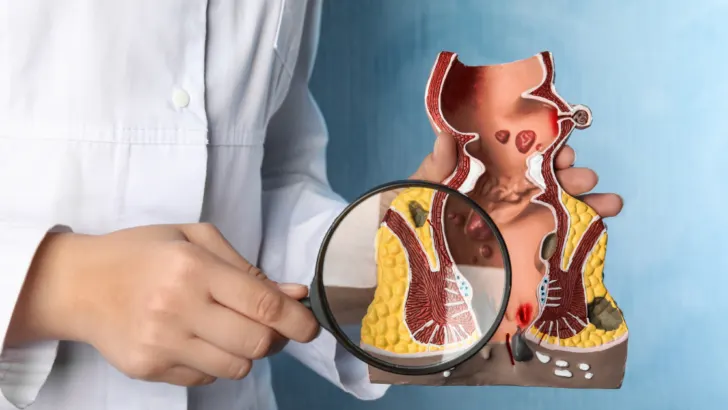
Your doctor may also recommend lifestyle changes to help prevent future hemorrhoids. These may include:
- Eating a high-fiber diet
- Drinking plenty of water
- Exercising regularly
- Avoiding sitting for long periods of time
- Avoiding straining during bowel movements
Remember, if you experience hemorrhoids, it is important to see a doctor for proper diagnosis and treatment. With the right care, you can relieve your symptoms and prevent future hemorrhoids from occurring.
Conclusion
In conclusion, while hiking can cause hemorrhoids, it is not a certainty that it will happen to everyone. The risk of developing hemorrhoids during a hike can be mitigated by following some simple guidelines.
Firstly, it is important to stay hydrated during the hike to ensure that the stools remain soft and easy to pass. This will reduce the strain on the pelvic muscles and, in turn, lower the risk of developing hemorrhoids. Additionally, taking frequent breaks to rest and stretch can help to alleviate any pressure on the pelvic area, further reducing the risk of hemorrhoids.
It is also important to wear appropriate clothing and footwear that provide good support and ventilation. This will help to prevent excessive sweating and chafing, which can irritate the skin around the anus and lead to hemorrhoids.
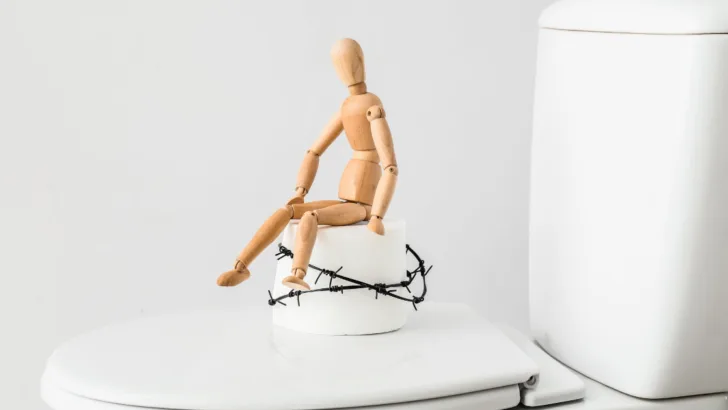
Lastly, it is important to maintain good hygiene practices, especially after bowel movements. This will help to prevent the spread of bacteria and reduce the risk of infection, which can exacerbate hemorrhoid symptoms.
Overall, while hiking can cause hemorrhoids, it is not a reason to avoid this enjoyable and beneficial activity. By following these simple guidelines, hikers can minimize their risk of developing hemorrhoids and enjoy their outdoor adventures without any discomfort or pain.
Frequently Asked Questions
Can strenuous physical activity lead to hemorrhoids?
Yes, strenuous physical activity can lead to hemorrhoids. Activities that involve heavy lifting, such as weightlifting or moving heavy objects, can cause increased pressure in the anal area and lead to the development of hemorrhoids.
What are some activities that can aggravate hemorrhoids?
Activities that involve prolonged sitting or standing, such as long-distance driving or standing for long periods of time, can aggravate hemorrhoids. Straining during bowel movements, lifting heavy weights, and engaging in vigorous exercise can also worsen hemorrhoids.
Is it safe to go hiking if you have hemorrhoids?
It is generally safe to go hiking if you have hemorrhoids, but it is important to take precautions to avoid aggravating the condition. It is recommended to avoid strenuous hiking trails and opt for easier, less strenuous routes. It is also important to take frequent breaks to rest and avoid prolonged sitting or standing.
What are some ways to prevent hemorrhoids while hiking?
To prevent hemorrhoids while hiking, it is important to stay hydrated and maintain a healthy diet high in fiber. Wearing loose-fitting clothing and using a cushion or pad to sit on can also help prevent hemorrhoids. It is also important to avoid straining during bowel movements and take breaks to rest and stretch during the hike.
Can sitting for long periods of time worsen hemorrhoids?
Yes, sitting for long periods of time can worsen hemorrhoids by increasing pressure in the anal area. It is recommended to take frequent breaks to stand up and stretch during prolonged sitting.
How can I alleviate hemorrhoid pain while engaging in physical activity?
To alleviate hemorrhoid pain while engaging in physical activity, it is recommended to use a cushion or pad to sit on and avoid activities that involve heavy lifting or straining. Applying a cold compress or taking a warm bath can also help alleviate pain and discomfort. It is important to consult a healthcare provider if the pain persists or worsens.
